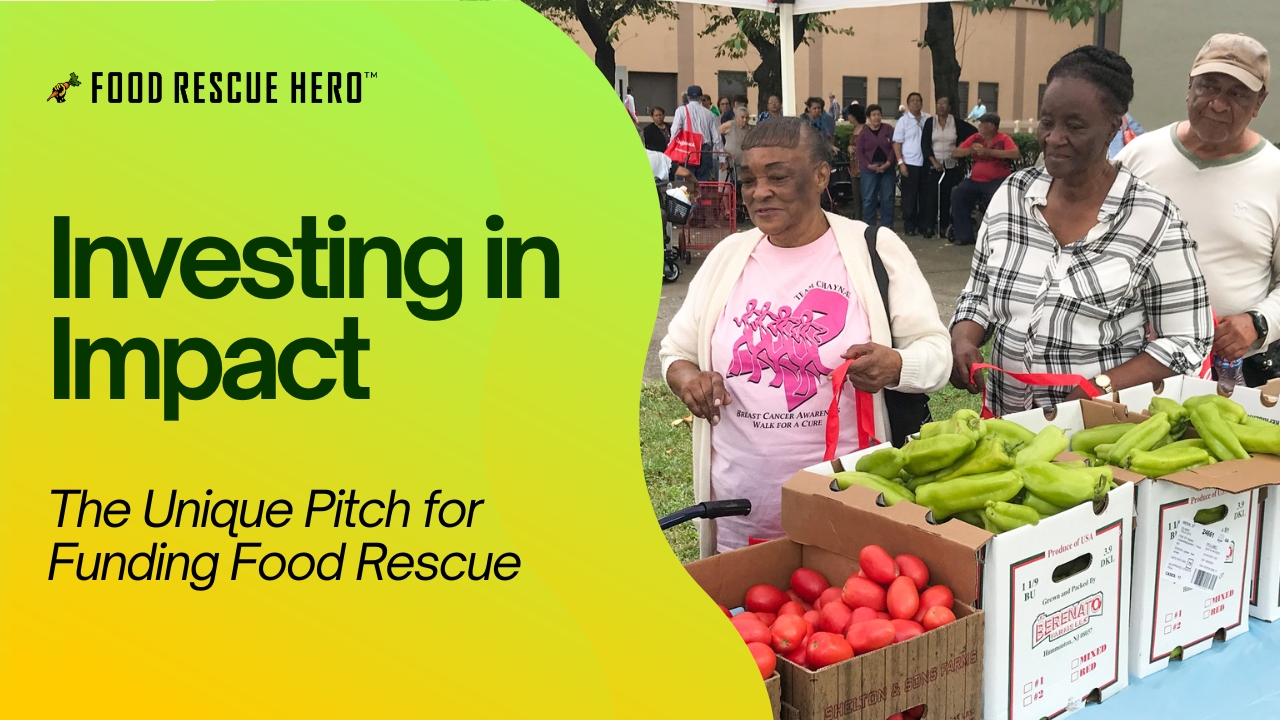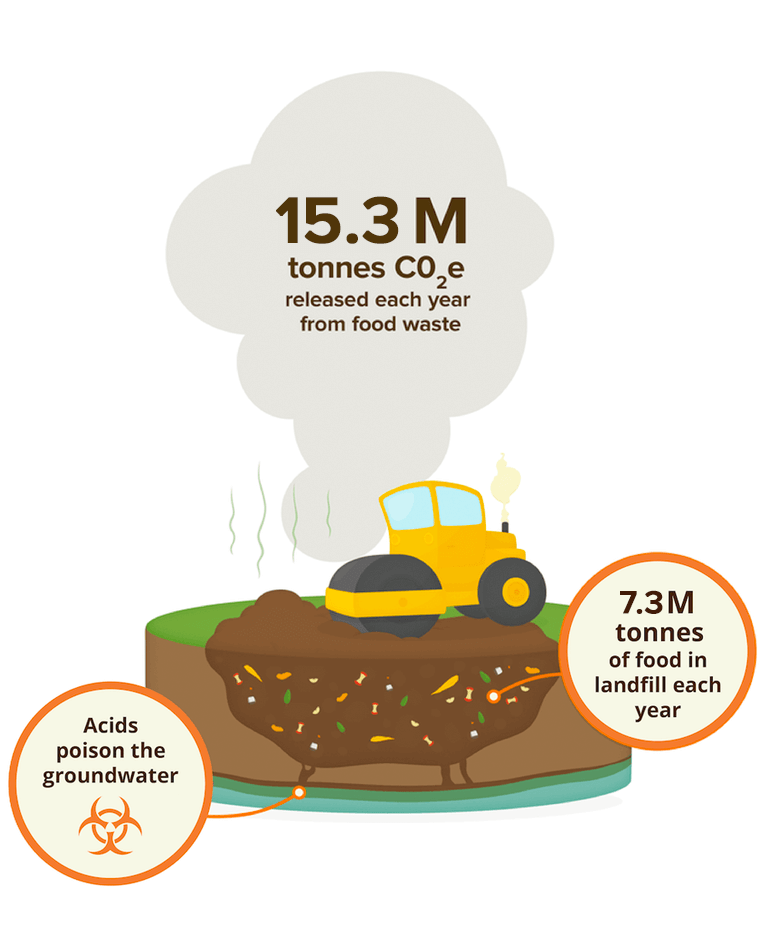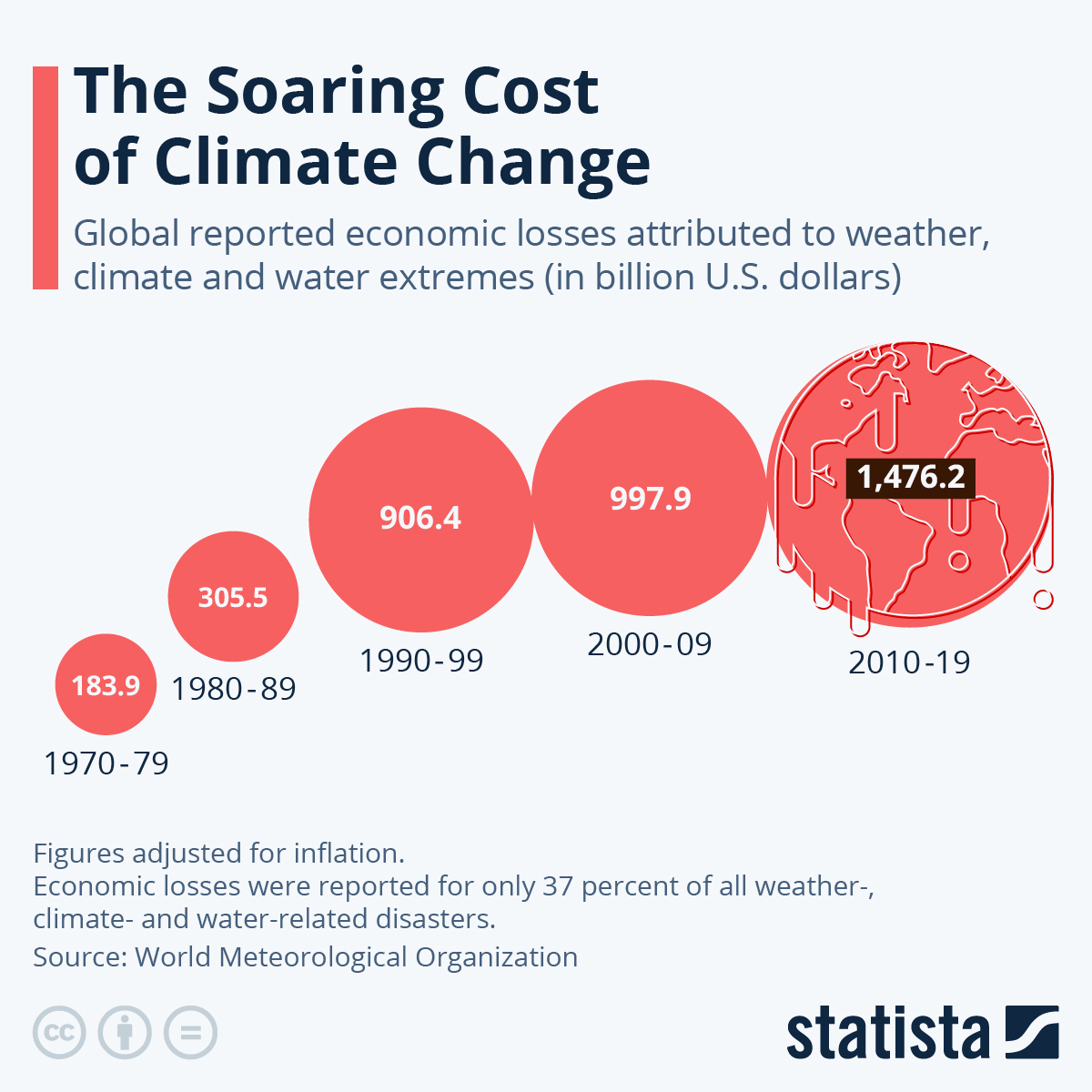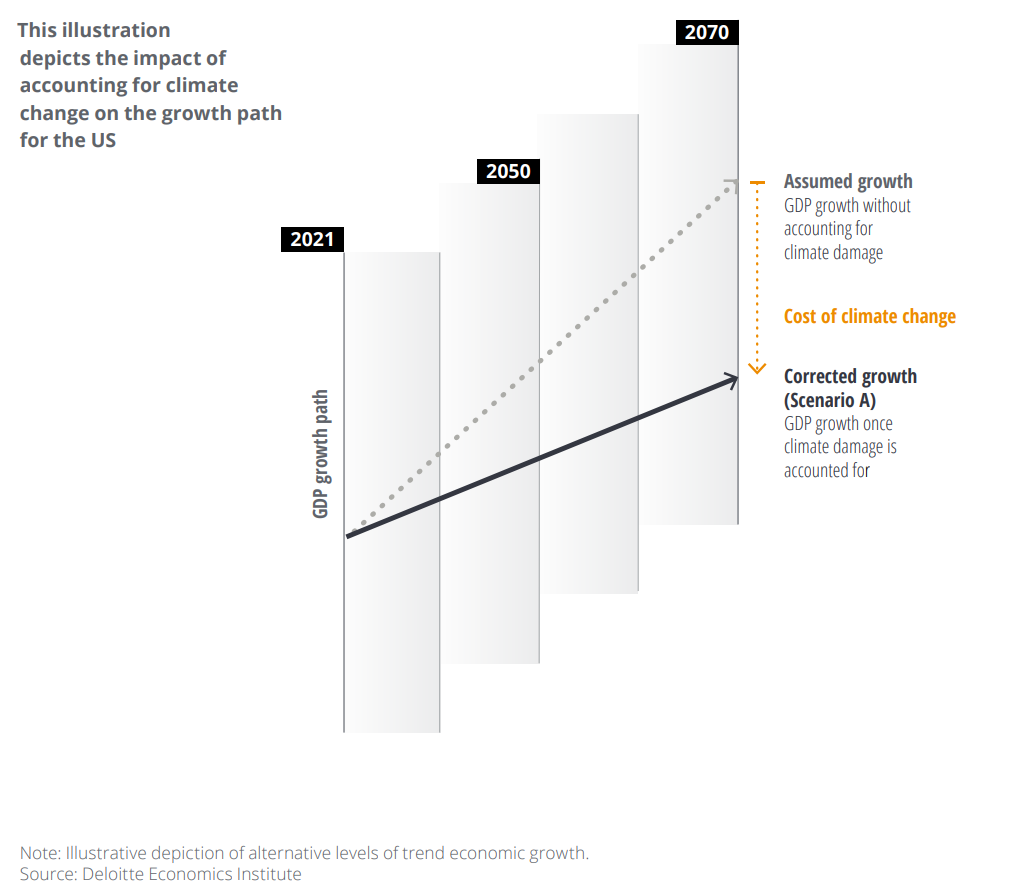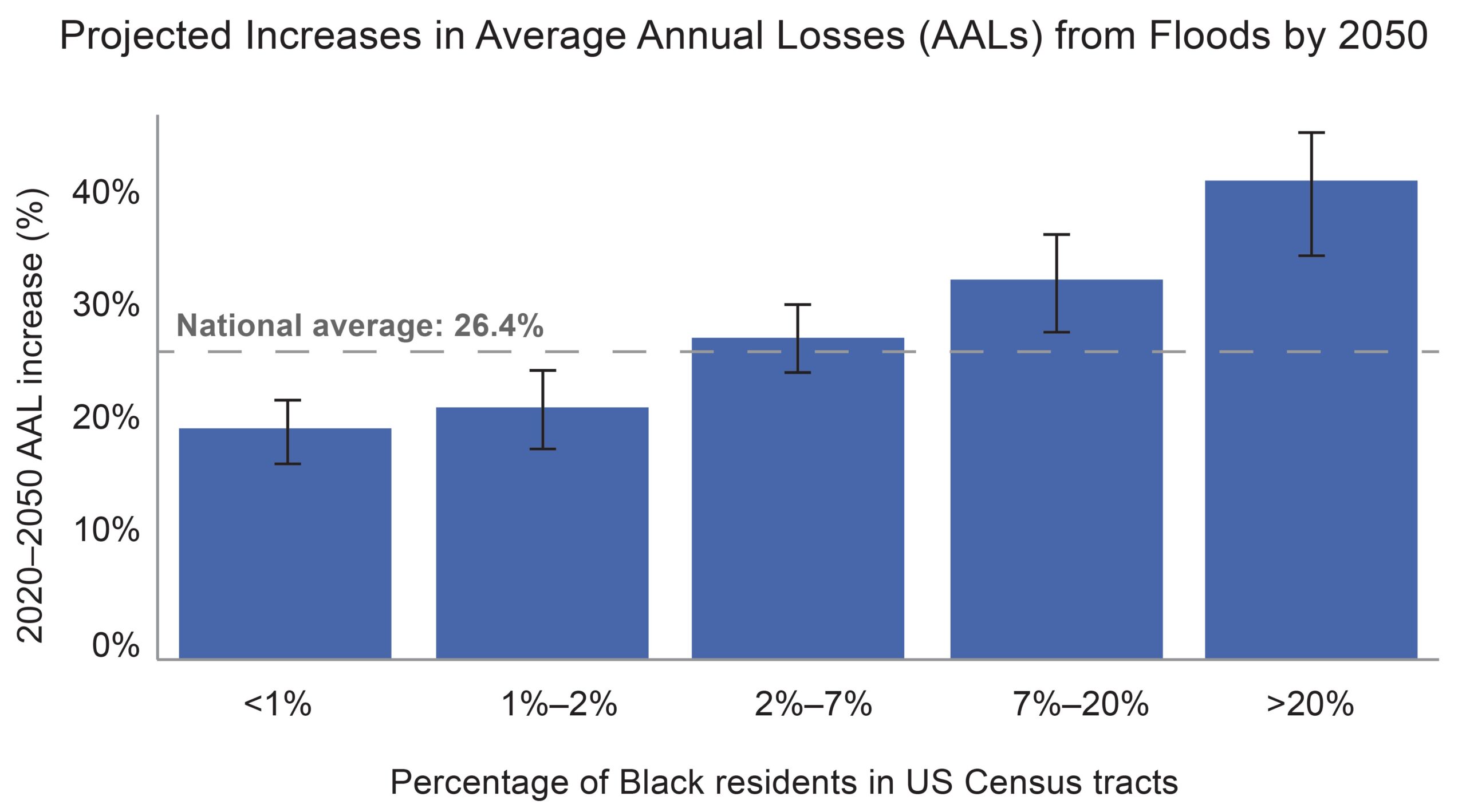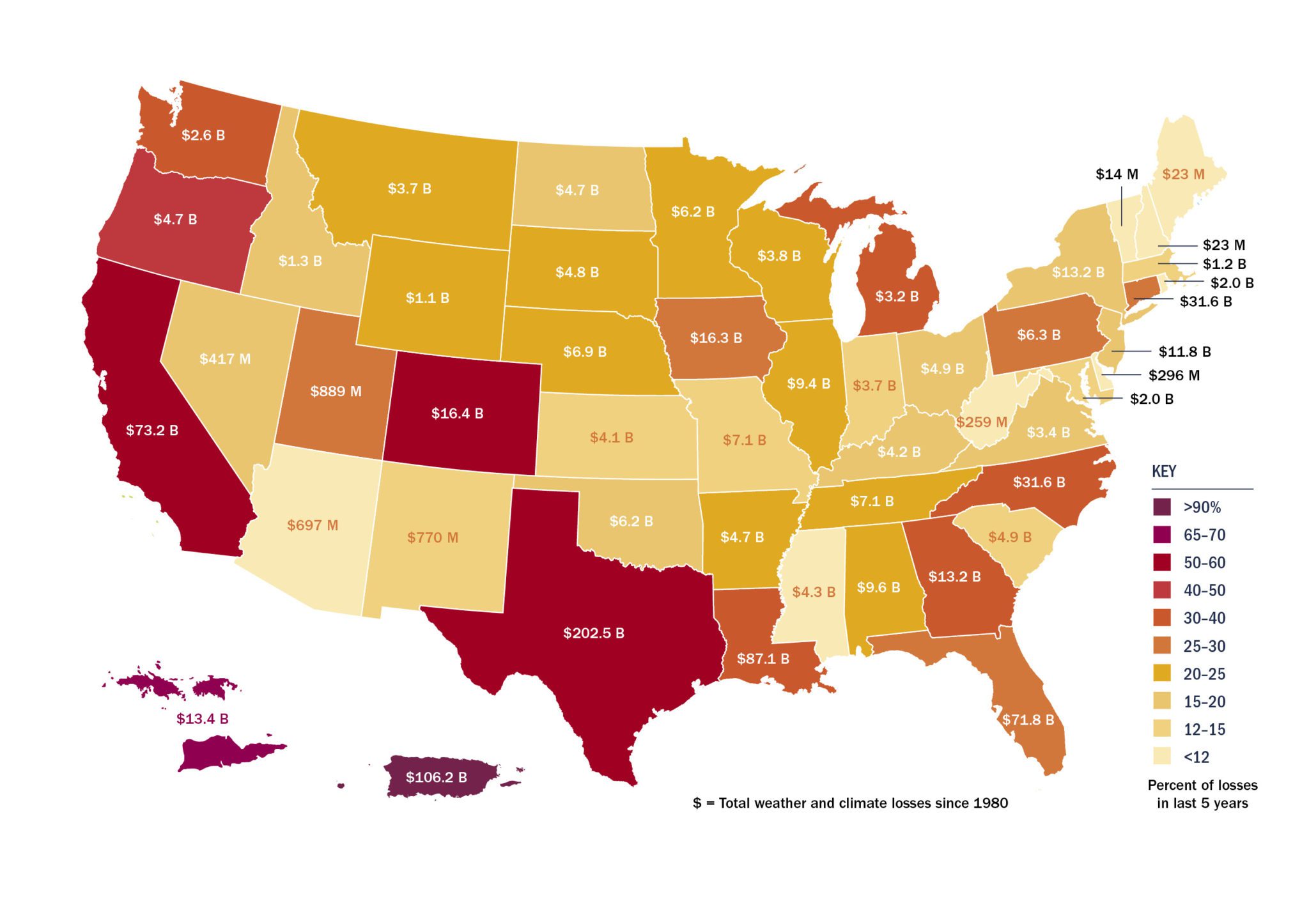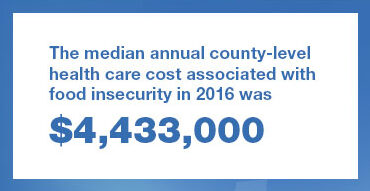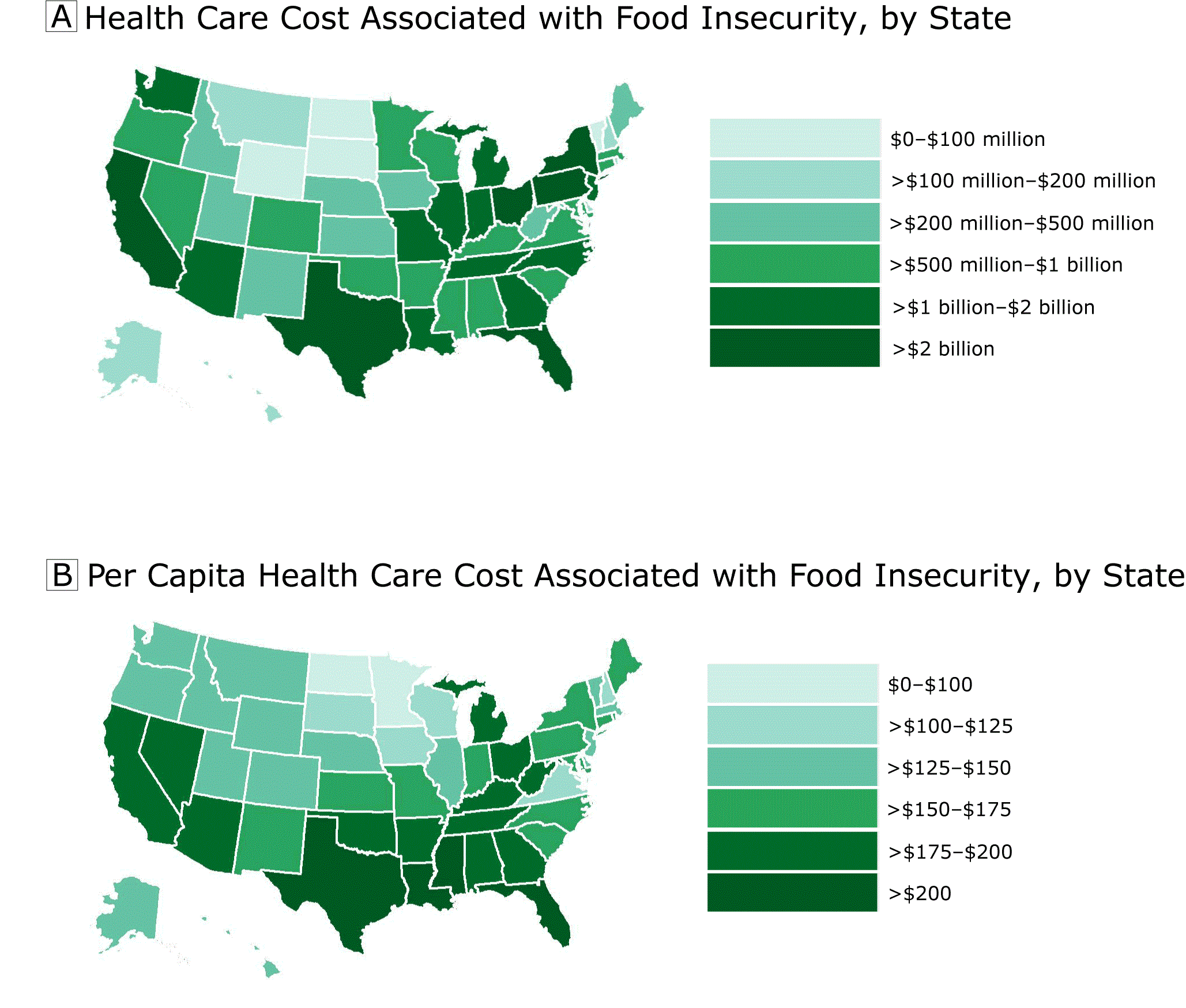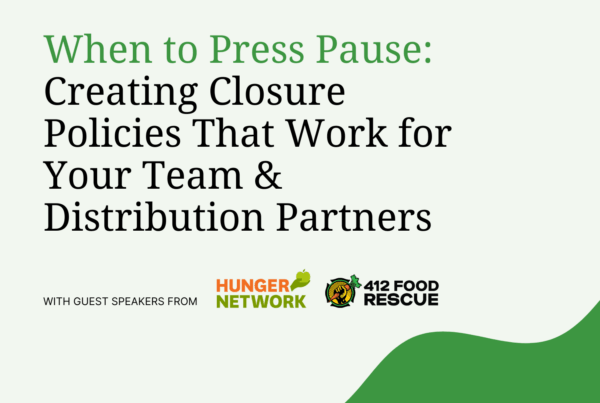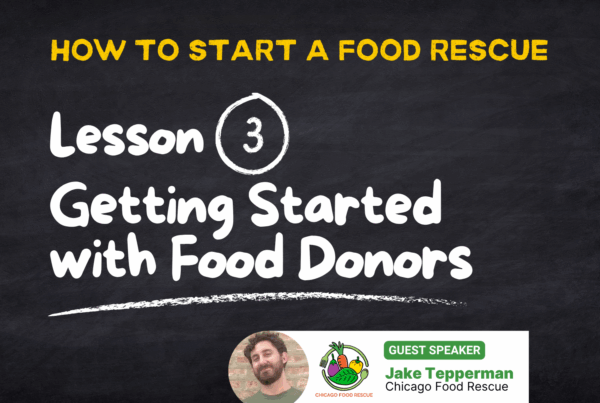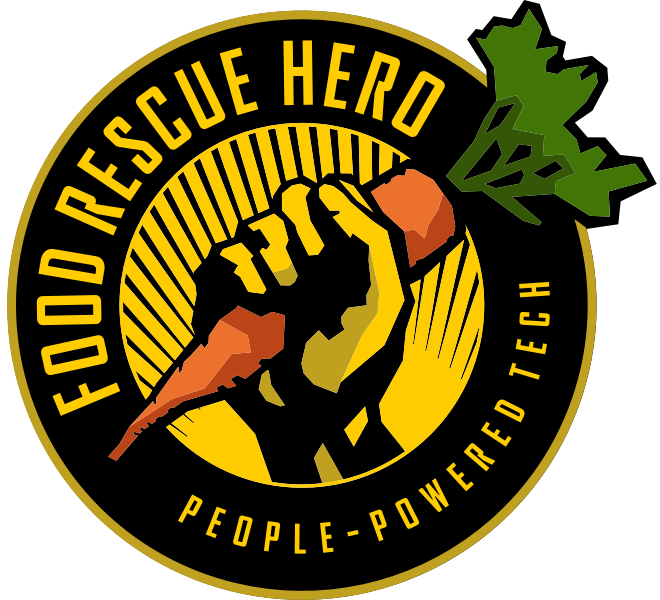In a world where millions suffer from hunger and vast amounts of food go to waste, food recovery emerges as a powerful solution. But often, food rescue isn't even a topic of consideration when funders discuss investing in climate change. Here, Food Rescue Hero™ lays out the real return-on-investment that food recovery offers for both climate change, food insecurity, healthcare costs, and overall wellbeing of our communities.
Watch our February 2024 webinar:
"Investing in Impact: The Unique Pitch for Funding Food Rescue"
The Cost of Inaction - Climate Change
Of all the good causes out there, why should funders, corporate, individual and foundation invest their social spending in Food Recovery? The answer lies in the cost of not investing in food recovery, which costs society in the form of higher health care costs, climate crisis disaster related costs and lost opportunities. But with one investment in food recovery, funders make an impact on food security AND climate change.
In terms of global greenhouse gas emissions, food waste ranks third, behind China as #1 and the United States as #2. 7.3 million tons of food fill our landfills each year, emitting 15.3 million tons of CO2eq.
The environmental effects of this wasted food has a very real price tag, as well. Extreme weather, fueled by climate change, cost the United States $165 billion in 2022 alone.
Inaction on climate change could cost the world’s economy US$178 trillion by 2070.In the U.S., nearly 900,000 jobs could disappear each year due to climate damage.
Climate change also affects specific communities differently. Projected increases in average annual losses from floods will disproportionately affect Black communities, and costs associated with climate change have varied not just state by state, but between communities.
The Cost of Inaction - Food Insecurity in Communities
When it comes to the cost that food insecurity introduces, this also comes with a hefty price tag – and not just for individuals, but for government and health care companies.
Adults who are food insecure face significant increased risk for chronic and acute health issues. According to the USDA, the predicted increase in risk for diabetes relative to food secure households increases by 61% for individuals with marginal food security; 89% for those with low food security; and 153% for individuals experiencing very low food security.
These health conditions, in part triggered by a lack of access to consistent nutrition and healthful foods, costs the individual in medical bills, time unable to work, the inability to care for their family – not to mention the bottom line impact to their health and life expectancy.
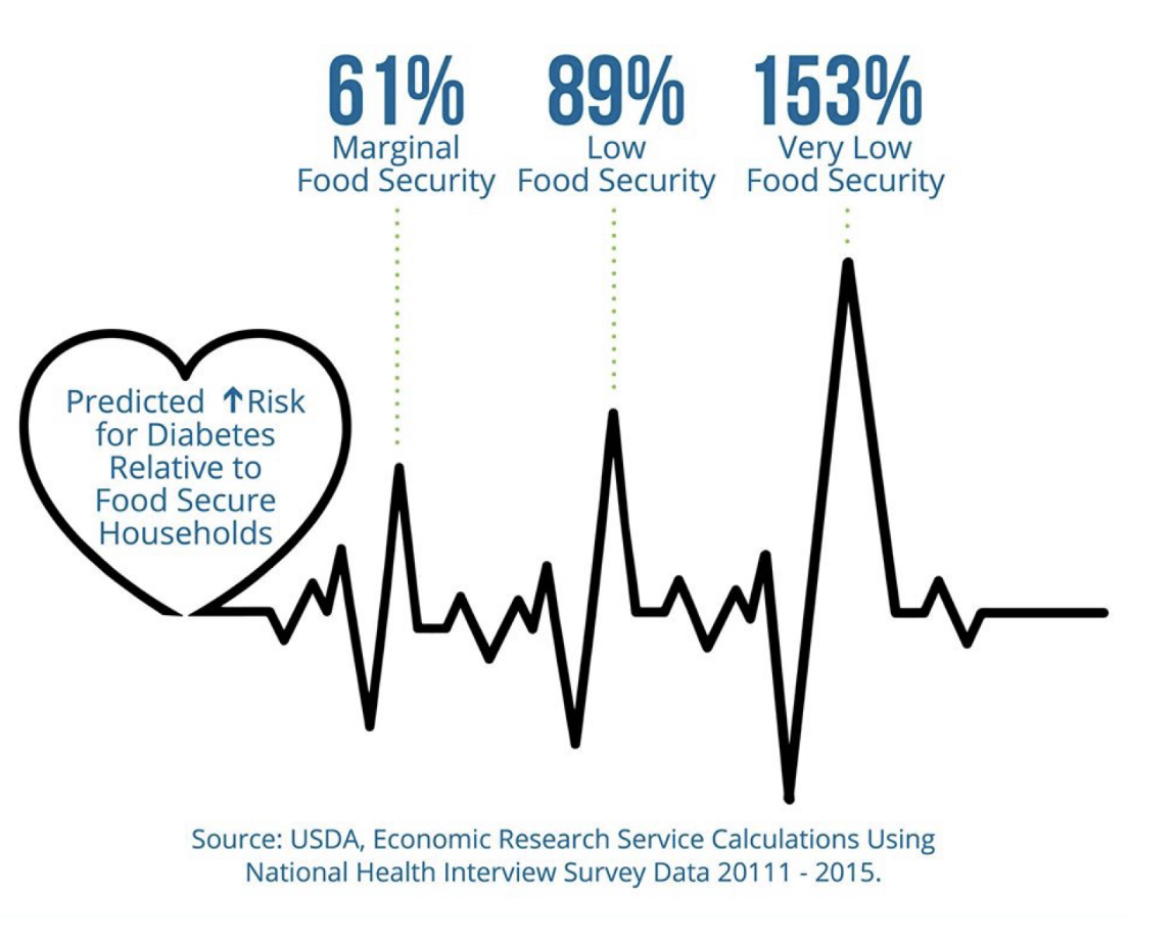
Overall, the cost of food insecurity totals $148.4 billion:
$57B: mental health
$45.9B: general health
$21.6B: suicide
$11.5B: hospitalizations
$7B: noncommunicable diseases
$5.4B: productivity loss
In Philadelphia, living just a few miles difference can decrease life expectancy nearly 20 years due to lack of food access.
Why? Food deserts, lack of transportation, and lack of resources all add up to decreased access to consistent healthful nutrition.
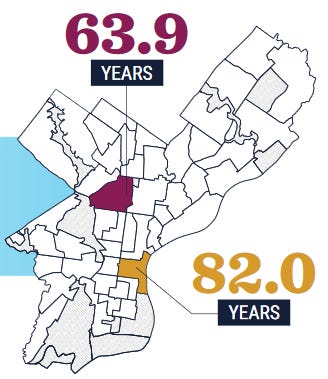
And this all just skims the surface, the impact of hunger and climate change to individuals, communities, and society as a whole are legion and constant.
We agree climate change and food insecurity are costly. So why does funding food rescue specifically give funders a higher ROI than other approaches? How can we get funders to think of grants funding food recovery as investments?
Return on Investment
Let’s take it back to Econ 101 for a minute. To start discussing the true return on investment that food recovery provides, we need to visualize traditional ROI. Return on investment is calculated as the ratio between net return and investment – easy enough. But when calculating the ROI of food recovery, we must also include the social and environmental costs of not doing food recovery in that net return calculation.
Taking just the issue of food insecurity, there are many barriers to food security beyond the financial:
- Money
- Time
- Transportation
- Food deserts
- Cooking equipment
- Preparation knowledge (how do I cook eggplant?)
Food recovery addresses multiple barriers in ways that other solutions do not. With 80-90% of food recovered through rescue being fresh, organizations are in fact forced to look at creating expanded distribution networks, delivering food to housing authorities, Head Start programs, veterans programs, LGBTQIA+ organizations and disability services. These expanded partnerships increase food access by decreasing barriers like time and transportation, or filling gaps within food deserts. And, as one of our LGBTQ+ agencies recently stated “[a]ccess to services sometimes get blocked due to fear and the marginalized treatment of many members of the LGBTQIA+ community. Folks need to feel safe when seeking help.”
The focus on reducing food waste actually makes the charitable food system more efficient and reduces waste there, in addition to reducing surplus at retailers. “We have pantries that have too many donations from grocery stores, and have to find another pantry to take their excess,” one food rescue organization says. Food recovery can fill the gaps by picking up surplus food at retailers that other food banks and pantries can’t take, but it can also pick up surplus food from these other nonprofit organizations themselves when their stock outweighs their need that week.
Food recovery makes an impact on nutrition security as well as food security. Food security is defined as having reliable access to a sufficient quantity of affordable food. Nutrition security is having consistent access, availability, and affordability of foods and beverages that promote well-being, prevent disease, and, if needed, treat disease, particularly among racial/ethnic minorities, lower income, and rural and remote populations including tribal communities and insular areas.
Food rescue promotes nutrition security through the foods that are able to be immediately rescued and redistributed. In the case of food banks and food pantries, only about 38% of food distributed is perishable (like milk, eggs, produce, or meat). It’s tough for food pantries to distribute fresh food because of storage space & conditions, the timing of donations, frequency of donations, or their limited hours of operation. With food rescue, however, 80-90% of the food redistributed is perishable, since food recovery overcomes some of those barriers associated with time-sensitive or refrigerated foods.
Consistent access to nutritious foods results in promoting optimal health outcomes for all communities, reducing healthcare costs and social costs associated with nutrition insecurity.
EPA Food Recovery Hierarchy
In the EPA’s refreshed Wasted Food Scale, it places donation as the primary solution behind source reduction. This placement is due to the cumulative impact food recovery has on individuals, communities, and the global climate.
Going back to our Econ 101 calculation, if we calculate the return on investment of food recovery as net return over investment, we’d be dividing the amount of money saved through reduction of climate change ($165B) by the cost of investment in food waste reduction.
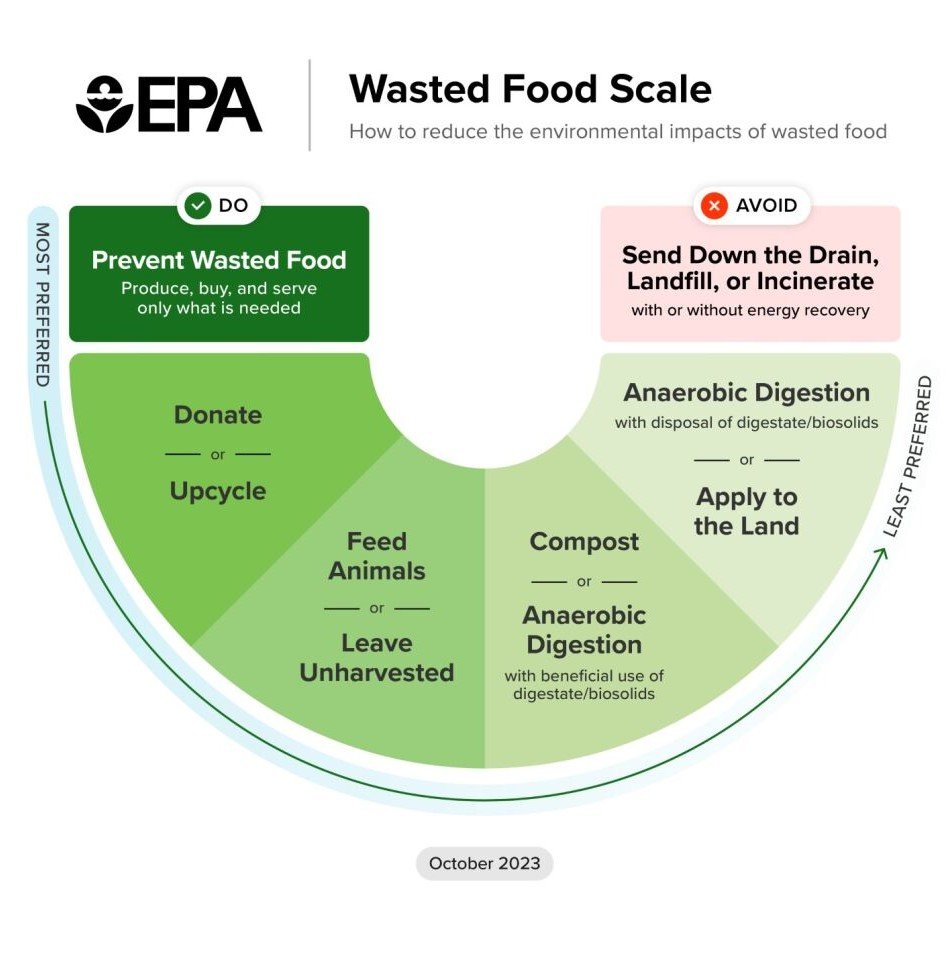
But taking into account the health outcome impact of food recovery means including the reduction of healthcare costs in the numerator as well, or $165B + $148.B associated with the potential reduction of healthcare costs. This ROI almost doubles from a financial standpoint, not to mention the intangible effect it has on communities who suddenly have increased access to nutritious foods. This intangible ROI is just as important: reducing barriers to food access means people have more
- Time for their families, for work, for pursuing education, or anything improving their quality of life
- Energy at school, at work, at home to pursue new ideas or strengthen relationships
- Dignity through not feeling othered by a lack of basic human necessities, or putting aside other needs in order to ensure food is on the table
Bringing It Home
What is the impact of scaling food recovery? It includes all the benefits funders expect from engaging in anti-hunger work or climate work, plus increased food access, nutrition security, a direct reduction in greenhouse gas emissions, reduction in costs associated with climate impact and healthcare, and other localized benefits unique to each individual’s increase in time, energy, and dignity.
A Call to Action
As we rally supporters for our cause, especially in larger corporations who can assist in the financial support of our work, it’s vital that we make them see their funding as an investment into the future of our communities by communicating the true ROI that food recovery provides.
Ultimately, food rescue is not just about feeding the hungry; it’s about building a more equitable and sustainable future for all. It’s about recognizing the inherent value of every piece of food, and the inherent dignity of every person. It’s about reimagining our relationship with food and our responsibility to each other and the planet.
Stakeholders across sectors need to prioritize and invest in food rescue initiatives. By unlocking the potential of surplus food, we not only nourish bodies but also safeguard our planet for generations to come. As we navigate the complex landscape of food insecurity and environmental decay, food rescue emerges as an ideal bridge between the two, offering a tangible path towards a more sustainable and equitable future.


